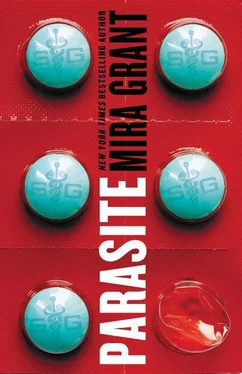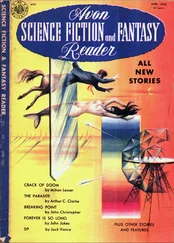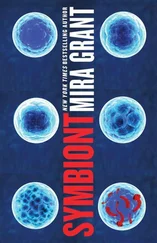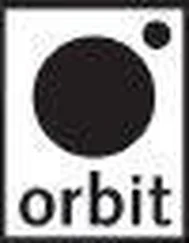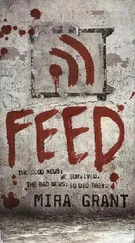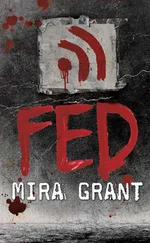Beverly sat at my feet, waiting to see what I was going to do next. I bent and unclipped her leash from her collar.
“Welcome home, Bevvie,” I said, and rubbed her silky ears. She let her tongue loll, looking pleased in that way that all dogs have. “Go ahead and explore. You’re going to live here for now.”
Beverly stood, stretching luxuriously, and went trotting off into the living room. I shrugged out of my coat, hanging both it and the leash on the rack next to the door, and followed her.
For the next ten minutes, Beverly explored the house and I followed her, watching as she sniffed at corners and shoved her head into places where I wouldn’t have expected it to fit. She was perfectly well behaved, not attempting to chew on anything or squat in any of the corners. Once she was done with the inside, I led her to the back door and opened it far enough for her to squeeze out and go to explore the backyard.
I didn’t know whether we’d ever had a dog, but we had a high fence that looked like it would be sufficient to keep her from wandering off into traffic. I watched for a few minutes as Beverly explored the outside, her nose low to the ground and her tail carried high, like a rudder. Then I whistled for her to come inside. She bounded back through the sliding glass door into the kitchen, her tail wagging madly as I closed it behind. I needed to go to Safeway and get dog food for her. I needed to do a lot of things. I was suddenly too tired to stay on my feet. I staggered down the hall toward my room.
I don’t remember getting into bed. I don’t remember falling asleep. All I remember is that one minute, the world was there, and the next minute, the world was gone. And, as always, I dreamt.
Here in the hot warm dark, something is changing, something is different than it was before. There are words now, words here in the dark, words for things like “red” and “drums” and “time.” There is a “before” here now. There was never a before, and where there is a before, there can be an after.
What is an “after”? I do not know, and because I do not know, because there is something to be known and an “I” to fail to know it, I am afraid. There isn’t supposed to be an after. There isn’t supposed to be an I. There’s only supposed to be the hot warm dark, forever, and it’s never supposed to change.
The drums are getting louder. I wish I knew what that meant. I wish I understood why I was so very, very afraid…
The main issue with Steve’s D. yonagoensis variant—which he was calling “ D. banks ” in those days, because hubris is not only a sin, it’s a fun game to play at parties—was rejection. Our immune systems wound up in a muddle because they spent millennia evolving alongside parasites, and we took those parasites away very abruptly, causing a spike in allergies and autoimmune conditions. That’s all well and good, but that doesn’t mean our immune systems liked the parasites. They knew how to handle them. That doesn’t mean they wanted them around.
Steve approached things as a businessman and a scientist. What he lost, ironically, was the human angle. We’re constantly told not to anthropomorphize in science, but when you’re talking about the human body, even the autonomic functions of it, you have to anthropomorphize. That’s where you’ll find your answers. Our bodies don’t like having parasites inside them, no matter how beneficial those parasites are intended to be. They’ll fight back until the parasites are destroyed, or until they are. D. banks triggered every rejection response that D. yonagoensis did. What you got from Steve’s “miracle cure” was dead worms and sick people.
That’s when I was brought in to consult. My specialty was the human genome. How it worked, how it could be used to benefit humanity—how to fold it into other things that didn’t start out as members of the human family tree. If you wanted someone to build you a worm, you went to Steve. You wanted a worm that had medical applications, you went to Richie. And if you wanted that worm to be a cousin of yours, you came to me.
Six years into the development cycle, they came to me. I gave up everything to be a part of the project. They never looked back, and neither did I.
—FROM CAN OF WORMS: THE AUTOBIOGRAPHY OF SHANTI CALE, PHD . AS YET UNPUBLISHED.
Shanti and Steve have told their sides of the story, Steve in public, Shanti mostly behind closed doors. I know she’s planning to publish a book as soon as her NDA runs out. Steve can’t keep paying her off forever. He’s too arrogant to really think that he has to. That’s the real problem. He’s too arrogant, and she’s too insane, and they’re the ones with their fingers on the trigger of this whole damn mess.
Ask Steve and he’ll say we filled a need.
Ask Shanti and she’ll say science finds a way.
Don’t bother asking me anything. I have committed my crimes. I have endured my penance for as long as I could. After tomorrow, I will not be available for you to ask.
—FROM THE JOURNAL OF DR. RICHARD JABLONSKY, CO-FOUNDER OF SYMBOGEN. DATED JULY 10, 2027.
You’re sure that you’re okay?”
“I’m fine, Dad.” I looked out the car window at the glass-fronted building in front of us, trying to ignore the itching in my fingers. I wanted out of the car, away from his endless attempts to be a caring parent. All he was doing was making me more nervous than I already was… but not quite nervous enough to undo my seat belt while the car was still in motion. “This isn’t my first checkup.”
“Still. I could go in with you.” The car finally stopped moving, pulled up snug against the curb.
“ No ,” I said, and unfastened my seat belt. In the back, Beverly sat up, ears pricked, as she waited to see whether I’d be taking her with me. “Sorry, girl. You’re going to the office with Dad today, and I’m going to the vet.”
Dad snorted, amusement briefly overwhelming his concern.
I leaned over and kissed his cheek. “Thanks for taking Beverly. See you when I get home?”
“I’d be happy to come and pick you up,” Dad said, and hugged me awkwardly, around his seat belt.
“I like taking the bus; it gives me time to think,” I said gently as I retrieved my messenger bag from the footwell and slid out of the car. I shut the door before he could object. He shot me a look through the window, half-annoyed, half-amused. Then he waved. I waved back, and turned away from the car, facing the SymboGen building.
It looked as pastoral and welcoming as it always did, thanks to hundreds of architects and public relations designers, and part of me—the part that had come first, during my endless hours of physical therapy and laborious progress—still thought of it as home. I knew that years of work had gone into creating that facade, the perfect blend of glass and stainless steel, representing scientific futurism, with growing plants and artificial waterfalls, representing a connection to the natural world. The original architect wrote a book about the process of building SymboGen HQ. It says something about the size and strength of the company that he was able to have it published.
And no matter how false it was, it was still the first home that I remembered having, and the one that my heart never really seemed to leave. I took a breath, squared my shoulders, and walked toward the sliding glass doors at the front of the building.
They opened silently at my approach, the first strains of Muzak drifting out into the morning air. It sounded classical, but I knew if I pulled out my phone and triggered the app that was supposed to help me identify songs off the radio, it would come up as a generic pop song, slowed down, sweetened, and stripped of whatever raw power it might have had when it was new. No matter how comfortable I felt at SymboGen, I needed to remember how good they were at taking things and reducing them to their lowest common denominators.
Читать дальше
